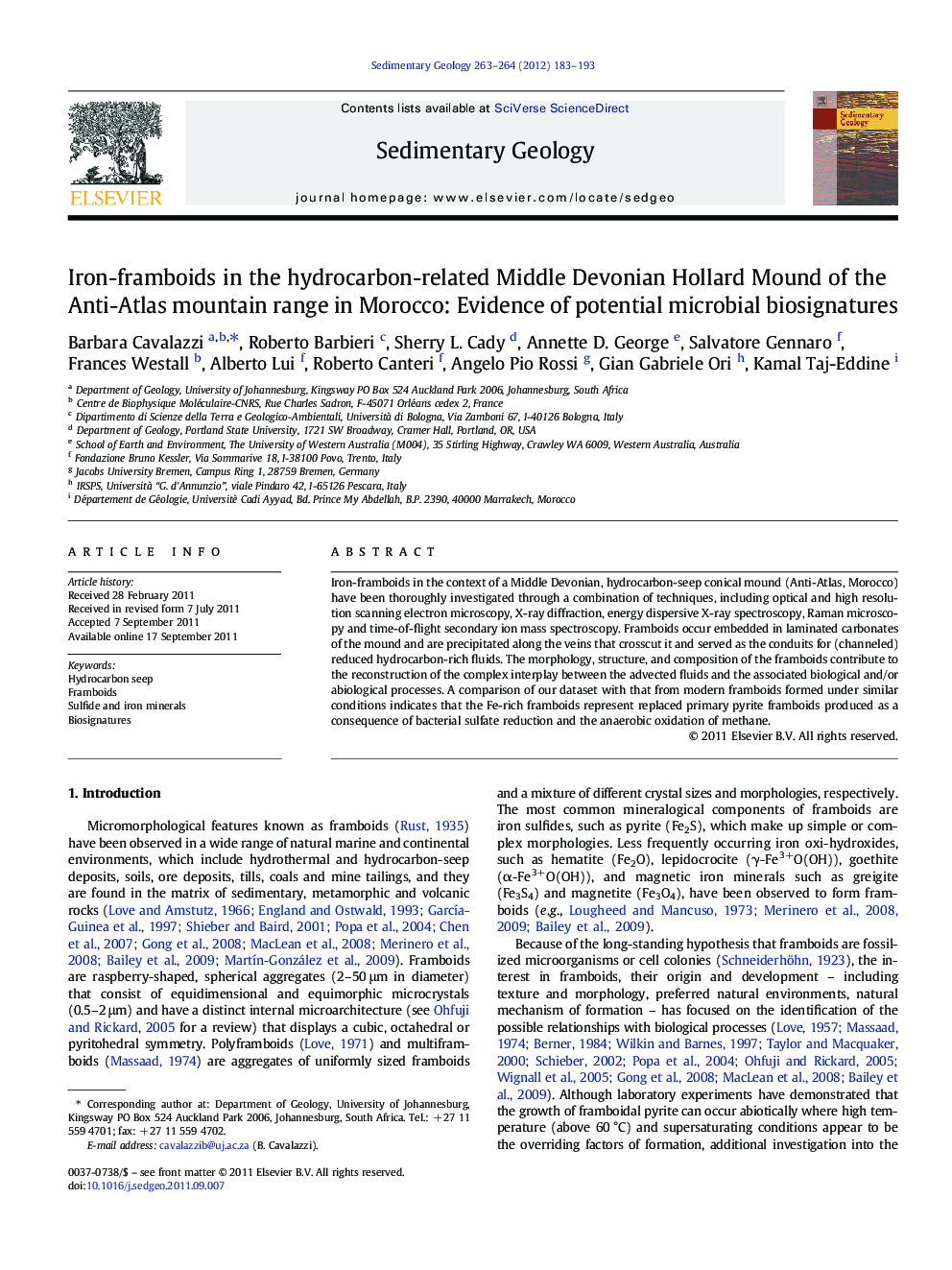| Article ID | Journal | Published Year | Pages | File Type |
|---|---|---|---|---|
| 4689786 | Sedimentary Geology | 2012 | 11 Pages |
Abstract
Iron-framboids in the context of a Middle Devonian, hydrocarbon-seep conical mound (Anti-Atlas, Morocco) have been thoroughly investigated through a combination of techniques, including optical and high resolution scanning electron microscopy, X-ray diffraction, energy dispersive X-ray spectroscopy, Raman microscopy and time-of-flight secondary ion mass spectroscopy. Framboids occur embedded in laminated carbonates of the mound and are precipitated along the veins that crosscut it and served as the conduits for (channeled) reduced hydrocarbon-rich fluids. The morphology, structure, and composition of the framboids contribute to the reconstruction of the complex interplay between the advected fluids and the associated biological and/or abiological processes. A comparison of our dataset with that from modern framboids formed under similar conditions indicates that the Fe-rich framboids represent replaced primary pyrite framboids produced as a consequence of bacterial sulfate reduction and the anaerobic oxidation of methane.
Related Topics
Physical Sciences and Engineering
Earth and Planetary Sciences
Earth-Surface Processes
Authors
Barbara Cavalazzi, Roberto Barbieri, Sherry L. Cady, Annette D. George, Salvatore Gennaro, Frances Westall, Alberto Lui, Roberto Canteri, Angelo Pio Rossi, Gian Gabriele Ori, Kamal Taj-Eddine,
